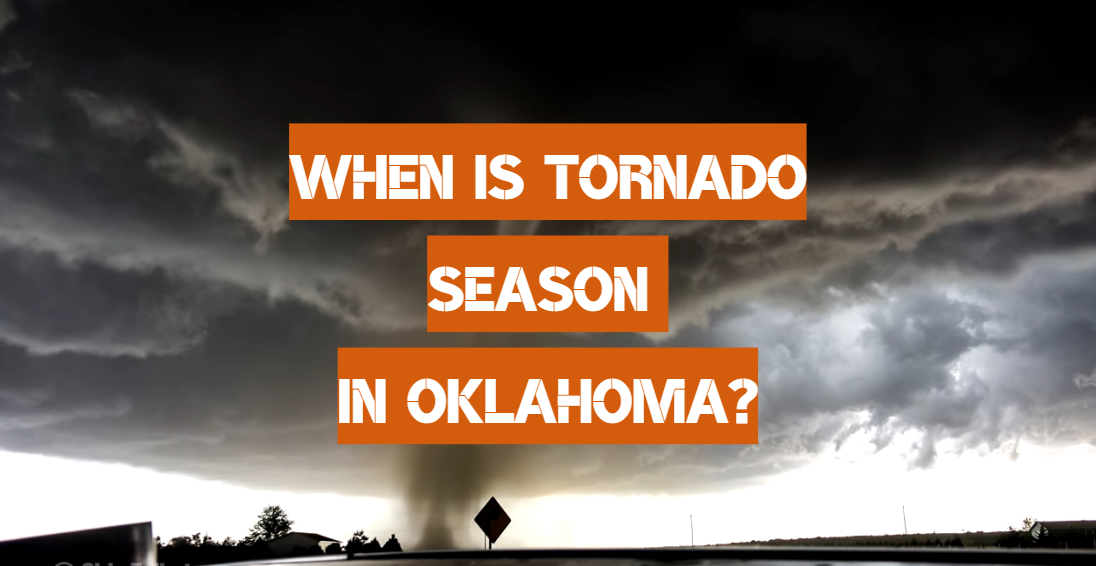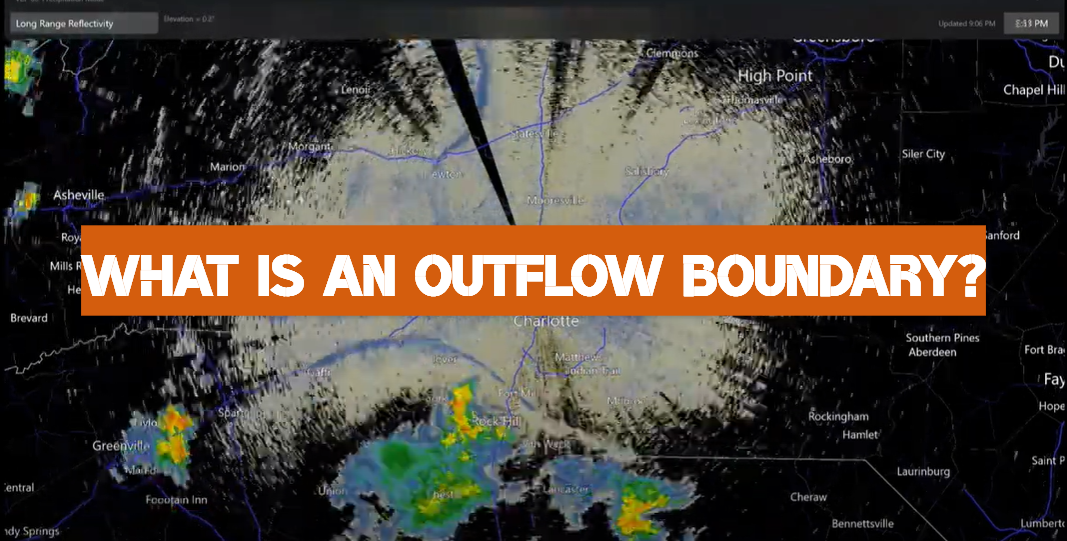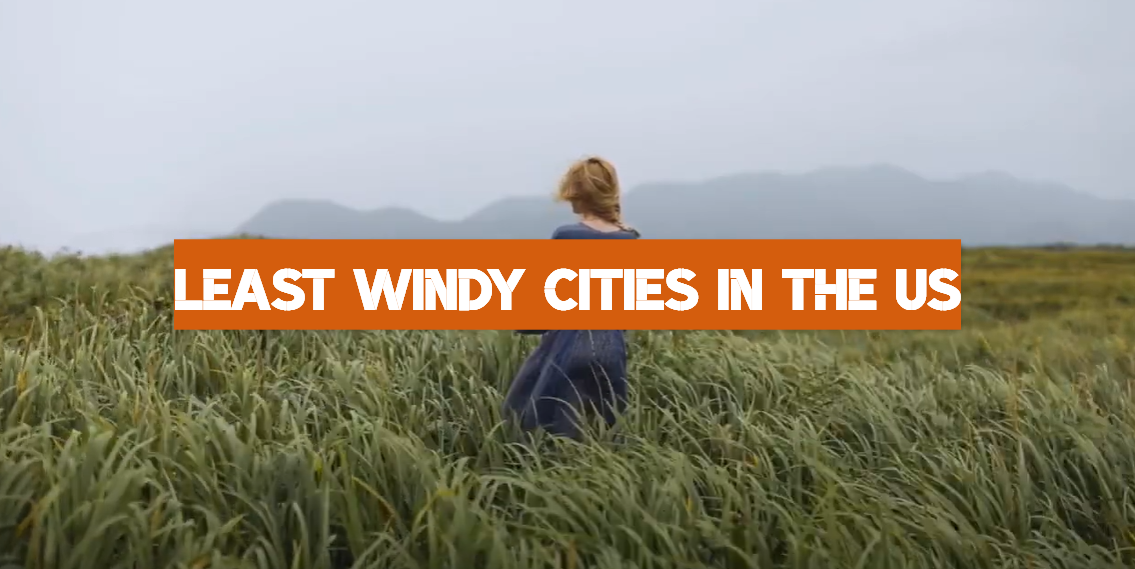Oklahoma is a state that is often hit with tornadoes. In the past, Oklahoma has been in the top five states for most tornado-related deaths and damage. Besides, recently we explained what is a rain-wrapped tornado and what’s the difference between cyclone and tornado. Tornadoes are so common in Oklahoma that people have begun to wonder what time of year they occur.
Table of Contents
When Is Oklahoma’s Most Active Severe Weather Season?
The first step to being prepared for a tornado is knowing when the season starts so you can take precautions. The weather experts say that Oklahoma’s tornado season typically begins in late April and runs through June, but it varies based on the year. The months of March and April are typically the most active time for tornadoes in Oklahoma. Tornadoes occur on average 9 to 12 times per year, with more than half of those occurring between March and May.
It also depends on where you live because not all storms are created equal. For example, if you live in rural areas of Oklahoma then your tornado risk may be higher than for someone who lives close to an urban area or near one of the lakes.

This is because lakes can trigger storms or cause them to become more severe. In addition, tornadoes are most likely in the southern parts of Oklahoma because they’re closer to the Gulf and tend to be warmer than northern areas during this time of year.
Tornado Watch means that a warning is possible for your area and you should prepare by gathering all your essential items together so you can leave quickly if need be. A tornado warning means it has been spotted nearby so take shelter immediately! The National Weather Service will also send out alerts through their app which makes staying safe even easier!
What Conditions Lead to Tornadoes in Oklahoma?
The conditions that lead to tornadoes in Oklahoma are most common during the spring and summer with June being statistically the worst month. The ingredients for a perfect storm include warm, moist air near the ground combined with cool dry air above it – with strong winds aloft providing rotation. This combination of factors is more likely to occur in the spring and summer months when severe thunderstorms are most prevalent.
Tornadoes can also be spawned by other types of storms including winter supercells that form along cold fronts during significant temperature swings or land-falling tropical cyclones that have embedded within them rotating bands known as mesovortices.
How to Prepare for Tornadoes in Oklahoma:
1) Create a tornado plan:
- Figure out where you would go if there is a warning;
- Find the safest place in your home based on what kind of building it is;
- If an underground shelter, storm cellar, or safe room with no windows are not available to you then pick a central location that does not have any exterior walls exposed and away from heavy objects such as pianos or refrigerators. Also, stay clear of large glass areas like picture windows, corner fireplaces, and big sliding-glass doors;
2) Avoid manufactured (mobile) homes
Tornadoes are more likely to uproot manufactured homes from their foundations and flip them over.
If you’re in a mobile home, leave it immediately and get as far away as possible, even if that means leaving the shelter of an interior room or hallway because flying debris can injure or kill you long before being crushed by your collapsing house has any chance.

And never go outside to watch a tornado unless the sky is so dark that you can’t see it! The force of 250+ mph winds will blast through trees like toothpicks while tearing apart houses around you with ease.
3) Put together an emergency kit for tornadoes that includes:
- Battery-powered radio;
- Plenty of batteries;
- Bottled water;
- Non-perishable foods;
- Flashlights for each person in the family;
- Blankets or sleeping bags to keep warm during power outages;
- Personal hygiene items such as soap and shampoo;
- Clothing appropriate for the season including rain gear if needed;
- Cash in small denominations along with your checkbook;
- Important documents like insurance policies that are kept at home just in case it is destroyed by the tornado;
- A first aid kit containing bandages, any prescription medications you take regularly, and insect repellent (in Oklahoma you may deal with lots of ticks);
- Maps of every county where people live who might need to be contacted;
- A large plastic tarp or sheet to cover the furniture in case of water damage;
- An axe for breaking windows if necessary;
- Sturdy gloves;
FAQ
What month has the most tornadoes in Oklahoma?
The highest number of tornadoes occur during May, June, and April. But you are more likely to receive a tornado warning in October than any other time of year. While March is usually the slowest month for severe weather alerts, it’s also when we have our highest risk of experiencing drought-related wildfires that can be just as dangerous.
You may experience some false alarms throughout late winter into early spring because conditions can still support supercells capable of spawning hail or an isolated tornado even though there isn’t really enough moisture present at this time to produce widespread severe thunderstorms or significant flooding events which tend to increase towards mid-spring through summertime.
The typical peak for tornadoes in Oklahoma is in May, but you can’t really predict with much accuracy when a tornado will occur until the conditions are right.
Where do most tornadoes occur in Oklahoma?
Most tornadoes in Oklahoma occur east of I-35. This is because most storms that produce violent or long-track tornadoes happen when the jet stream dips south into Texas, allowing warm moist air to flow northward from the Gulf of Mexico. Large-scale weather patterns are typically common west of Oklahoma City and Tulsa.
Are there any tornado warnings in Oklahoma right now?
Oklahoma is no stranger to tornadoes, but it’s important that you stay safe when they threaten. There are many things that go into preparedness for a tornado warning, which can seem overwhelming if this isn’t something you have experience in the past. If there are any warnings out right now in your area, make sure to find somewhere sturdy and low-to-the-ground where family members should take shelter immediately.
This could be an interior room without windows on all sides or perhaps even a basement. It’s also helpful to keep flashlights at hand along with bottles of water, nonperishable food items like granola bars or peanut butter crackers, blankets or sleeping bags, changes of clothes including rain boots, a first-aid kit, and any medications that may be necessary.
What part of Oklahoma has the worst tornadoes?
Oklahoma is in “Tornado Alley”. There are more tornadoes here than anywhere else! The area between Oklahoma City and the Texas panhandle has some of the highest numbers, but there are also many twisters that touch down across northern Oklahoma.
Moore is located in Tornado Alley, which is known for frequent and severe tornadoes and hailstorms. It’s one of the world’s most tornado-prone big cities due to its location in the Oklahoma City metropolis (of which Moore is a part).
What are the odds of being hit by a tornado in Oklahoma?
Being in the right place at the wrong time can have a devastating impact on your life. You never know when you might be vulnerable to a tornado, so it’s important to understand what causes them and how they affect us.
There are different types of tornadoes based on strength – from EF0 all the way up to an EF-five or “incredible” rating that is capable of doing catastrophic damage.
In Oklahoma, there are about 100 tornadoes per year with more than half being EF-one or weaker storms not typically considered dangerous according to extensive research by NOAA (National Oceanic Atmospheric Administration).
However, it only takes one bad storm for loss of property and even injury or death as well as distress due to close calls with tornadoes.
Neither location nor time of year is a factor that can predict tornadoes, but it’s important to note that more than 30% of the United States experiences some level of thunderstorm activity during peak tornado season from March through May with April being the most active month for lightning strikes and severe storms, according to NOAA.
Although Oklahoma typically has its own unique weather patterns, springtime in the southwestern region coincides with increased humidity over warm temperatures which are prime conditions for severe storm formation.
On average, about 68 people are killed by tornados each year according to The Weather Channel – making them one of America’s top-five deadliest natural disasters behind floods, hurricanes, earthquakes, and landslides as reported by FEMA (Federal Emergency Management Agency).
What was the deadliest storm to hit Oklahoma?
On May 3, 1999, an extraordinary tornado outbreak destroyed much of central Oklahoma. A total of 46 people died that day, and thousands of homes were destroyed. The most powerful storm was an EF5 that ripped through Moore and caused billions of dollars in damage.
Has Oklahoma ever had an F5 tornado?
The answer is yes and it was on May 24, 1999. It’s been 17 years since the last F5 tornado touched down in Norman, Oklahoma.






Leave a Reply